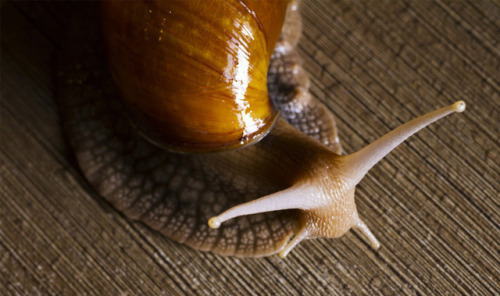d-d-dangerous:fieldbears:end0skeletal:Collected from the Egyptian desert in March of 1846, the Helix
d-d-dangerous:fieldbears:end0skeletal:Collected from the Egyptian desert in March of 1846, the Helix desertorum specimen was sent to the British Museum, where scientists thought it had expired in transit. It was glued to a cardboard display card shortly after.One day four years later, curators noticed something strange about their catatonic mollusk: the shell seemed to have moved from its glued position and a trail of discoloration followed it.Archivists removed it from the card to give it a bath, with a suspicion the snail might have in fact been slumbering.After just a few minutes of exposure to moisture, the snail’s head poked from its shell and surveyed its new home with four eye stalks.As the snail adjusted to active life again, it became a minor celebrity and sat for a portrait by the museum’s zoological artist for inclusion in a book on mollusks, seen below:(Source)Reblogging the immortal snail againTaking a four year nap is big mood rn -- source link
Tumblr Blog : end0skeletal.tumblr.com

